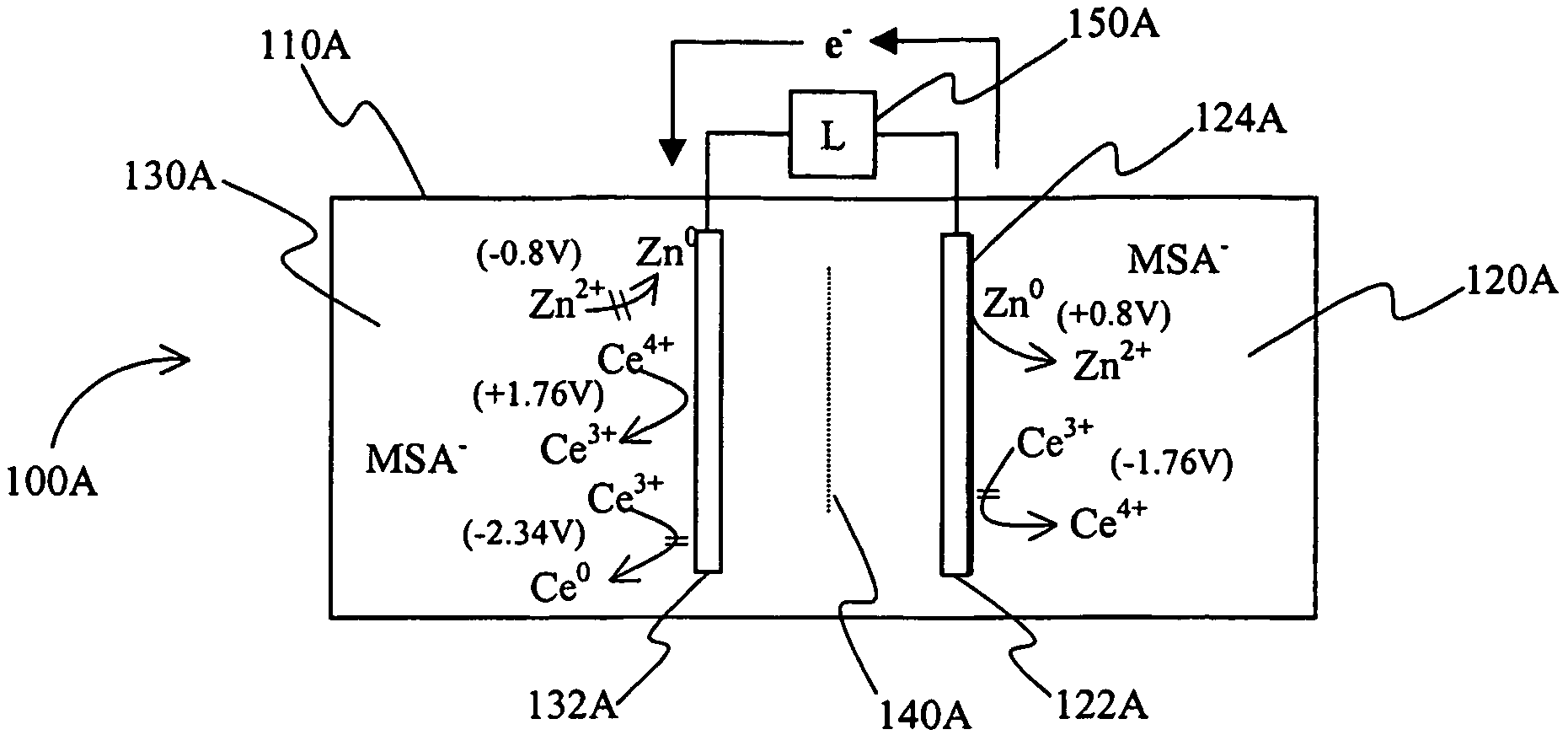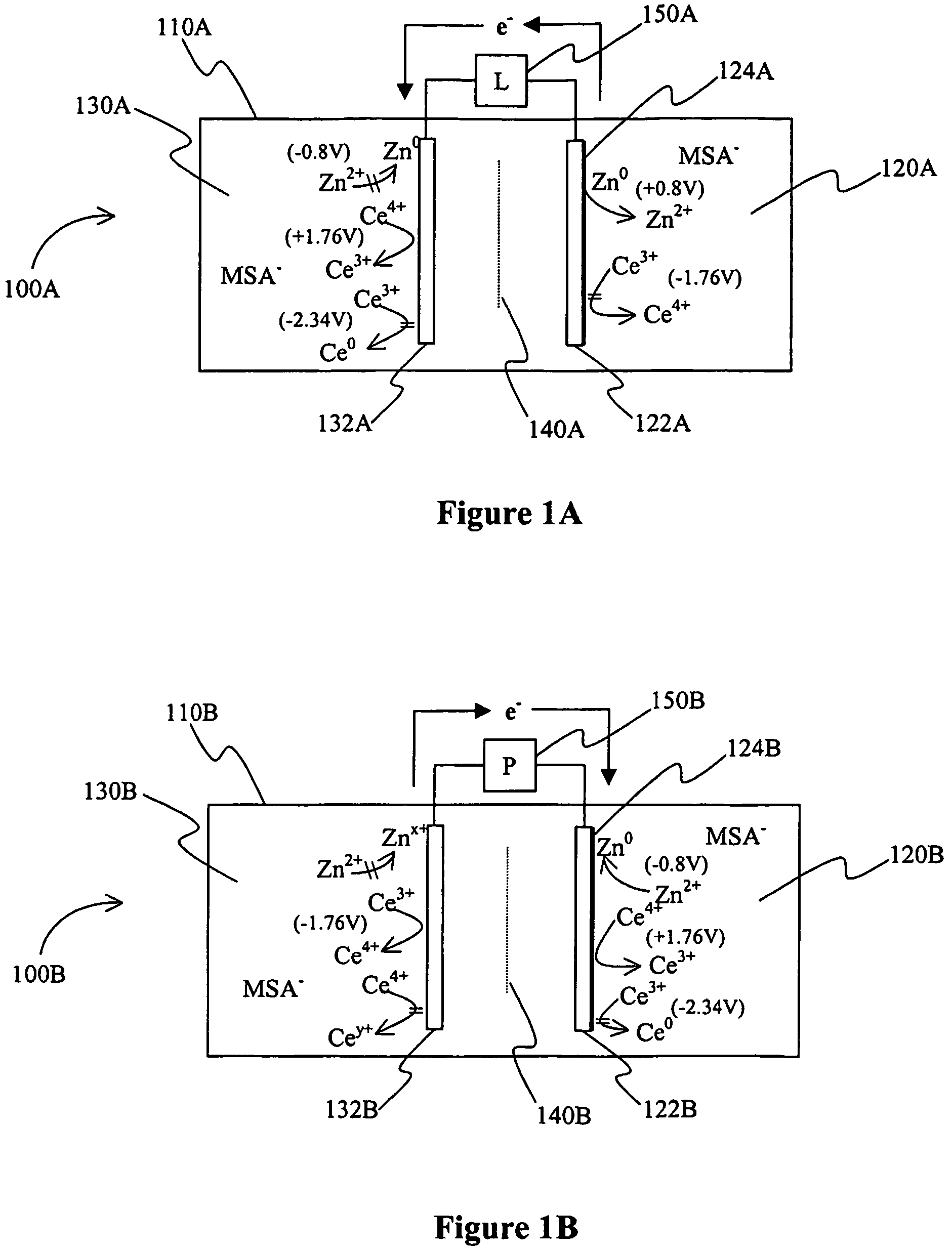Mixed electrolyte battery
a battery and electrolyte technology, applied in the field of battery electrolytes and battery electrolytes, can solve the problems of mercury oxide toxicity, poor power-to-weight ratio of commonly used zn/c batteries, and even more problems
- Summary
- Abstract
- Description
- Claims
- Application Information
AI Technical Summary
Benefits of technology
Problems solved by technology
Method used
Image
Examples
Embodiment Construction
[0019]The inventors have discovered that a battery may comprise an electrolyte that contacts the anode and includes a redox pair formed by a first element and a second element, wherein the battery is charged at a voltage sufficient to plate the first element at the anode, and wherein the voltage is insufficient to plate the second element on the anode when the second element is present at the anode. Thus, a secondary battery may comprising a mixed electrolyte that includes a redox pair formed by a first element and a second element.
[0020]As used herein, the term “first element” refers to a chemical element that may be in ionic form as well as in non-ionic form. For example, a preferred first element is zinc, which may be present as metallic (e.g., plated) zinc as well as ionic zinc (e.g., as Zn2+ in a salt with an anion of an acid). Similarly, the term “second element” refers to a chemical element that may be in ionic form as well as in non-ionic form. For example, a preferred secon...
PUM
| Property | Measurement | Unit |
|---|---|---|
| vol % | aaaaa | aaaaa |
| vol % | aaaaa | aaaaa |
| open circuit voltage | aaaaa | aaaaa |
Abstract
Description
Claims
Application Information
 Login to View More
Login to View More - R&D
- Intellectual Property
- Life Sciences
- Materials
- Tech Scout
- Unparalleled Data Quality
- Higher Quality Content
- 60% Fewer Hallucinations
Browse by: Latest US Patents, China's latest patents, Technical Efficacy Thesaurus, Application Domain, Technology Topic, Popular Technical Reports.
© 2025 PatSnap. All rights reserved.Legal|Privacy policy|Modern Slavery Act Transparency Statement|Sitemap|About US| Contact US: help@patsnap.com


